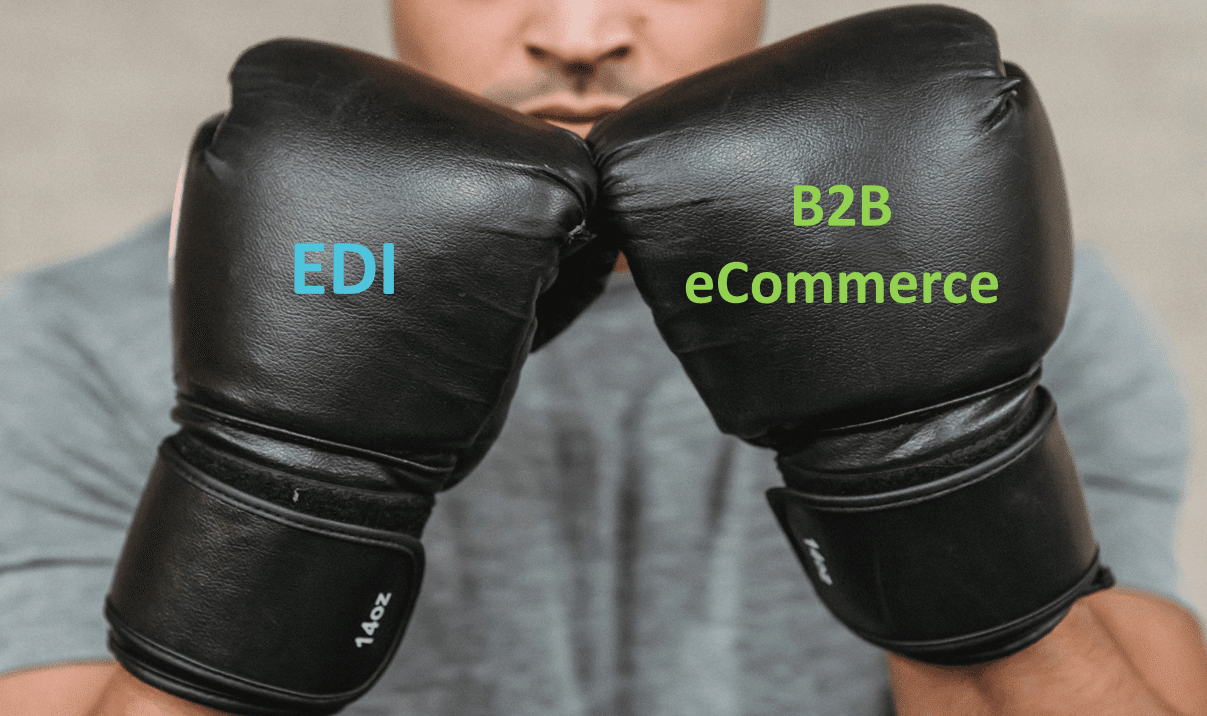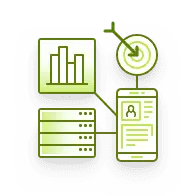What’s the Difference Between EDI and B2B eCommerce?
March 22, 2023 By Yana Persky

As the digital age continues to expand, businesses have been turning to Electronic Data Interchange (EDI) and Business-to-Business (B2B) eCommerce to facilitate their transactions. But what’s the difference between the two? In this blog post, we’ll explore the differences between EDI and B2B eCommerce and discuss the use cases for each technology.
When it comes to EDI and B2B eCommerce, the biggest difference lies in how the data is exchanged. EDI (Electronic Data Interchange) involves the exchange of electronic business documents such as purchase orders, invoices and shipping notices and requires a specific set of standards and protocols that must be followed. EDI is often used by large enterprises such as those in the automotive and retail industries, as well as in healthcare and government sectors.
B2B eCommerce is a platform that allows businesses to buy and sell products online. Unlike EDI, B2B eCommerce does not require any specialized software or protocols, and instead relies on web-based/native mobile systems to facilitate transactions. B2B eCommerce platforms typically include features such as product catalogs, pricing and inventory information, and online ordering and payment systems.
B2B eCommerce is often used by businesses that sell products with high SKU counts, such as manufacturers and distributors, as well as those that have complex pricing and discount structures.
So, when should businesses use EDI versus B2B eCommerce?
Well, there are a few key factors to consider:
- Industry requirements: In some industries, such as healthcare and government, EDI may be required for certain transactions. Businesses should check with their partners and customers to see if EDI is necessary for compliance purposes.
- Transaction volume: If a business is exchanging a high volume of documents with their partners, EDI may be a more efficient option, as it can automate the exchange of information and reduce the need for manual data entry.
- Flexibility: B2B eCommerce may be a better option for businesses that need more flexibility in their pricing, discounts, and promotions. B2B eCommerce platforms can be customized to meet the needs of individual businesses, whereas EDI is more standardized.
According to a report by Forrester, the share of electronic data interchange (EDI) transactions will increase slightly from 20% in 2022 to 21% in 2027, while the share of e-Commerce sales will rise from 17% in 2022 to 24% in 2027.
Overall, while the growth of EDI may be slowing, it is still a widely used technology in many industries, particularly in the B2B space. There are certainly some challenges associated with its use, as well as newer technologies and approaches emerging that may compete with or replace EDI in certain contexts.
EDI Use Cases:
- Procurement: EDI is commonly used in procurement to automate the exchange of purchase orders, invoices, and other documents between buyers and suppliers. This helps to reduce errors, speed up the ordering process, and improve visibility into the supply chain.
- Shipping and receiving: EDI can be used to transmit shipping notices and advance shipment notices (ASN) between trading partners. This allows businesses to track the movement of goods through the supply chain and manage inventory more effectively.
- Finance: EDI can be used in finance for electronic funds transfer, invoicing, and other financial transactions between businesses. This helps to improve cash flow, reduce processing costs, and speed up the payment process.
B2B eCommerce Use Cases:
- Online storefront: B2B eCommerce platforms provide businesses with an online storefront where they can showcase their products and allow customers to browse and purchase online.
- Order processing: B2B eCommerce platforms provide businesses with an automated order processing system that can handle large volumes of orders, process payments, and manage inventory.
- Marketing and sales: B2B eCommerce platforms provide businesses with tools for marketing and sales, such as email campaigns, product recommendations, and customer analytics.
The use cases for EDI and B2B eCommerce can overlap in some situations. For example, a company that uses EDI for purchasing transactions might also use a B2B eCommerce platform for less standardized transactions, such as custom orders or one-time purchases.
In general, EDI is often used for high-volume, standardized transactions between trading partners, while B2B eCommerce is used for a wider variety of transactions and can offer more features and flexibility.
EDI is particularly useful for companies that have long-term relationships with their suppliers or customers and need to automate the exchange of information.
B2B eCommerce, on the other hand, is a newer technology that allows businesses to buy and sell goods and services online.
B2B eCommerce platforms typically provide businesses with an online storefront, shopping cart, and payment gateway, allowing them to conduct transactions in a similar way to B2C eCommerce. B2B eCommerce is particularly useful for companies that sell goods or services to other businesses and who seek to expand their customer base or reach new markets.
When deciding between EDI and B2B eCommerce, it’s important to consider the unique needs of your organization. EDI is often the preferred choice for larger organizations that need to exchange data quickly and securely. EDI is also ideal if you are already working with large trading partners who also use EDI systems.
However, if you’re just getting started with digital commerce, B2B eCommerce may be the best choice. B2B eCommerce allows you to configure a website for customers to browse and order products, making the process much simpler for both parties. Additionally, many B2B eCommerce platforms provide operational analytics, so you can perform trend analysis over time, compare actual vs. targets and discover patterns in purchasing behavior.
If you’re looking for an easy-to-use platform with user-friendly design features and configurable back-office, then B2B eCommerce could be the way to go. If high security and speed are paramount concerns, then EDI should be strongly considered.
In some cases, combining EDI with B2B ecommerce might make the most sense. For instance, if you want to get the benefits of automated data exchanges (EDI) but also offer a custom user experience (B2B eCommerce), then incorporating both could yield the best results.
Consider what your business requires in terms of speed, security, user experience, scalability and cost before committing to one or the other. With a thorough evaluation process, you should have no trouble finding the right fit for your business needs.























